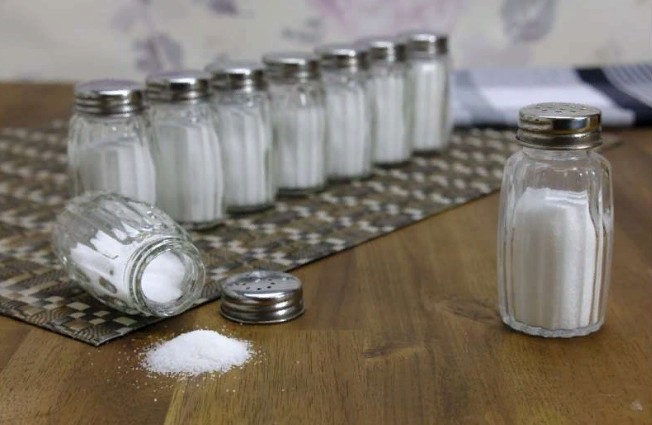The study investigates what the food industry needs to know about sodium reduction
Sodium is a necessary micronutrient, but the amount we require is small. Three slices of bread or one teaspoon of table salt will suffice, and your daily sodium intake is likely to be much higher.
Overconsumption of sodium by more than 90% of Americans can lead to hypertension, high blood pressure, and an increased risk of heart disease and stroke.
Because processed and packaged foods account for the vast majority of excess sodium, the food industry and food scientists are constantly looking for ways to reduce sodium.A new paper from the University of Illinois has done a very good job of looking at the scientific literature on how to cut down on the amount of sodium in food.
Overconsumption of sodium is a major health concern, and the FDA has recommended sodium reduction in foods since the 1980s, but we have yet to achieve success.
While the unit volume of salt in the food supply has not increased, the amount of sodium consumed has increased due to the fact that we eat a lot of food. Soo-Yeun Lee, professor in the Department of Food Science and Human Nutrition (FSHN) at the University of Idaho and co-author of the paper, agrees.
We only need about 450 milligrams (mg) of sodium per day, with a maximum of 2,300 mg recommended for those at risk of hypertension, or 1,500 mg for those at risk of hypertension.
However, the average daily consumption exceeds 3,000 to 3,500 mg, which is 50% to 100% higher than the upper limit.Processed and packaged foods make up more than 70% of the salt we eat, mostly cured meats, bread, cheese, and soups.
The researchers carried out a scoping review that included primary studies, literature reviews, book chapters, and patents on sodium reduction in food products. They focused on studies that used sensory data from people, because this is important for people to like a product.
“We examined various food systems in this review. Salt reduction in a solid system, such as a topical application to snack foods like salted peanuts or salted chips, would be very different from embedded salt reduction in semi-solid foods like cheese or bread.
And in a liquid system, such as soup, where it is completely dissolved, it would be very different in terms of how we could reduce salt while still providing the palatability it provides, Lee asserts.
“We hope that this research will shed light on the wide range of salt-reduction technologies that exist. She continues, “This can help food companies become more informed and use different strategies than they have in the past.
Salt reduction, salt substitutes, flavor modification, physical modification, and functional modification were the five main strategies that the researchers looked at when they looked at how to change food.
“The most obvious one is to remove salt from the recipe, and that is a key component in all of the strategies when sodium reduction is the goal,” says Aubrey Dunteman, a graduate student in FSHN and the paper’s lead author.
However, because sodium has both sensory and functional properties, it cannot be completely eliminated. It is used to preserve meat and to make bread dough rise, for example.
“A lot of the studies we looked at combined more than one method,” Dunteman says. Salt removal with salt replacements and flavor changes, for example, or salt removal and physical changes.
Many studies used salt substitutes like potassium chloride, calcium chloride, or other chloride or acid salts as salt substitutes. They also have a bitter taste, so they are often used with flavor modifiers like umami substances or bitter blockers to make the food taste better.
“Physical modification is another method. You can, for example, encapsulate the salt crystals, which alters how the salt dissolves in the mouth.
This can alter the perception of saltiness, allowing for a reduction in the amount of sodium required to produce the salty taste. You can also make an uneven distribution of salt in a product, which can help improve the perceived saltiness of the food product through taste contrast, “Dunteman elaborates.
Then there’s functional modification. For example, instead of sodium nitrate, you could use a celery-powder preservative instead of sodium nitrate in cured meats. “
According to Dunteman, functional modification isn’t included in the scoping review because this type of sodium-reduction research doesn’t usually include a sensory component as the main way to measure how much sodium people are cutting out of their food.
The best way for consumers to reduce their salt intake is to cook their own food and limit their consumption of processed and packaged foods. With practice, you can also wean yourself off salt, essentially going on a “salt diet.”
If you cook at home, you can reduce salt on purpose, and you’ll appreciate the reduced saltiness perception over time. People can adjust to the lower salt level, but it takes time and effort. Flavor enhancers such as herbs and spices can also be used, Lee proposes.
If you like canned soup, for example, you can get a low-sodium version and season it with salt. Then, gradually reduce the amount of salt you add until it is palatable to your taste, “she observes.
Research on food salt reduction was published in Comprehensive Reviews in Food Science and Food Safety. It was called “Comparison of sodium reduction strategies in foods: A scoping review.”





